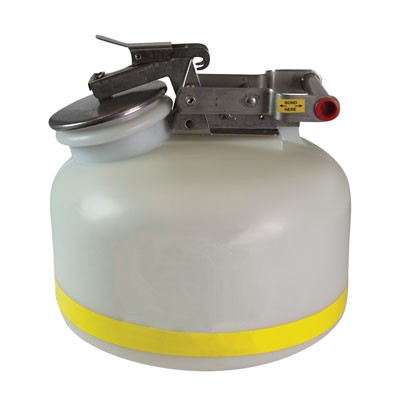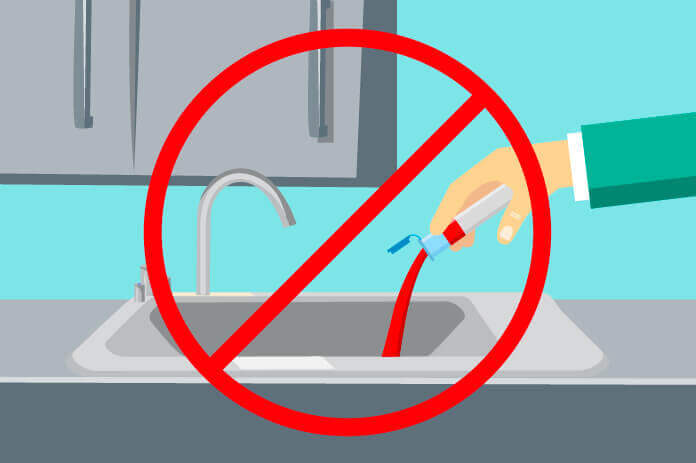Ingenious Industrial Wastewater Treatment Solutions: Shielding the Setting
Wiki Article
Just How Liquid Garbage Disposal Functions: A Comprehensive Overview of Strategies and Technologies Used

Introduction of Liquid Waste Kind
The intricacy of fluid waste types necessitates an extensive understanding of their attributes and ramifications for disposal. Liquid waste can generally be categorized right into numerous kinds, including commercial, local, farming, and contaminated materials. Each category displays distinctive residential properties, requiring particular management strategies to mitigate ecological and health risks.
Industrial liquid waste stems from making procedures and typically contains a range of impurities, such as hefty metals, solvents, and natural compounds. Municipal fluid waste, mostly making up wastewater from households and business facilities, includes raw material, nutrients, and microorganisms (industrial wastewater treatment). Agricultural fluid waste, consisting of drainage from ranches, may have plant foods, pesticides, and animal waste, positioning threats to water high quality and communities
Dangerous liquid waste is identified by its poisoning, sensitivity, or possible to create damage. This category consists of materials like acids, bases, and certain chemicals that require strict handling and disposal protocols. Recognizing these diverse fluid waste kinds is crucial for developing effective disposal approaches and making certain conformity with ecological regulations. Correct classification and characterization are essential for applying suitable therapy strategies and decreasing the unfavorable effect on public wellness and the setting.
Physical Therapy Methods

Screening is the first action, where bigger particles and debris are gotten rid of from the fluid waste utilizing displays or grates. In sedimentation containers, larger particles clear up at the bottom, forming a sludge layer, while the cleared up fluid can be additional treated.
Purification is an additional necessary method that entails passing the fluid via permeable materials, such as sand or membrane layers, to capture smaller bits. This step boosts the high quality of the liquid, making it appropriate for succeeding therapy processes.

Chemical Therapy Methods
Chemical treatment methods are important for effectively handling liquid waste, specifically in dealing with liquified and colloidal contaminants that physical techniques might not properly remove. These methods utilize different chemical representatives to reduce the effects of, precipitate, or change hazardous materials into less dangerous forms.One typical method is coagulation and flocculation, where chemicals such as alum or ferric chloride are included in promote the aggregation of put on hold particles. This process boosts sedimentation, permitting less complicated removal of the resulting sludge. Additionally, oxidation procedures, using representatives like chlorine or ozone, are employed to break down complicated organic substances and virus, rendering the waste much safer for discharge or additional over at this website therapy.
Neutralization is an additional important strategy, which changes the pH of acidic or alkaline waste streams to neutral levels, avoiding potential harm to downstream systems and the atmosphere. Additionally, advanced oxidation processes (AOPs) utilize mixes of oxidants and ultraviolet light to break down relentless toxins, achieving a higher degree of treatment effectiveness.
Organic Treatment Processes
Biological treatment procedures play a vital duty in the management of liquid waste by utilizing microorganisms to disintegrate natural issue and minimize pollutant degrees. These processes can be broadly categorized into aerobic and anaerobic treatments, each employing specific microbial areas to attain reliable waste destruction.Cardiovascular treatment involves using oxygen to facilitate the break down of organic products by microorganisms. This procedure is frequently executed in turned on sludge systems, where aeration containers give a favorable atmosphere for microbial growth, leading to the oxidation of organic pollutants. The resultant biomass can be divided from treated effluent through sedimentation.
On the other hand, anaerobic treatment takes place in the lack of oxygen, depending on different microorganisms to break down natural issue. This approach is particularly useful for high-strength waste, as it produces biogas, a renewable power resource, while decreasing sludge manufacturing. Technologies such as anaerobic digesters are often employed in metropolitan and industrial applications.
Both aerobic and anaerobic biological therapies not only lessen the environmental influence of liquid waste yet likewise facilitate resource recovery, making them vital parts of sustainable waste monitoring methods. Their versatility, performance, and effectiveness support their prevalent implementation throughout numerous markets.
Arising Technologies in Disposal
Innovative techniques to liquid waste disposal are quickly advancing, driven by developments in modern technology and an increasing emphasis on sustainability. Among these emerging innovations, membrane layer bioreactors (MBRs) have actually gained traction for their capability to integrate organic therapy with membrane filtration, resulting in top notch effluent that can be recycled in numerous applications. MBRs enable smaller footprints and much more effective operations contrasted to standard systems.An additional encouraging growth is the use of anaerobic digestion combined with nutrient recuperation technologies, which not only treats fluid waste yet additionally creates biogas and recovers valuable nutrients like nitrogen and phosphorus. This dual benefit boosts source effectiveness and decreases ecological influence.
In you can try here addition, progressed oxidation processes (AOPs) are being embraced for the destruction of complex organic toxins. These methods utilize YOURURL.com effective oxidants and drivers to break down contaminants at the molecular degree, supplying an extremely reliable option for difficult waste streams.
Additionally, the combination of synthetic intelligence and artificial intelligence in waste monitoring systems is enhancing operational performance and anticipating maintenance, leading to lowered prices and enhanced environmental conformity. These innovations reflect a considerable shift towards even more efficient and lasting liquid waste disposal techniques.
Conclusion
In verdict, effective liquid waste disposal demands a detailed understanding of various techniques and technologies. By continually advancing these approaches, it comes to be possible to attend to the expanding obstacles associated with fluid waste, eventually contributing to environmental security and source recuperation.Fluid waste disposal is an important element of ecological monitoring, calling for an extensive understanding of different methods and innovations customized to different waste kinds. Fluid waste can extensively be classified right into a number of kinds, consisting of commercial, metropolitan, farming, and unsafe waste. Agricultural fluid waste, consisting of runoff from farms, might have plant foods, chemicals, and pet waste, posturing threats to water quality and environments.
Different physical treatment techniques play an important role in managing liquid waste effectively - industrial wastewater treatment.In verdict, reliable fluid waste disposal requires a comprehensive understanding of various techniques and modern technologies
Report this wiki page